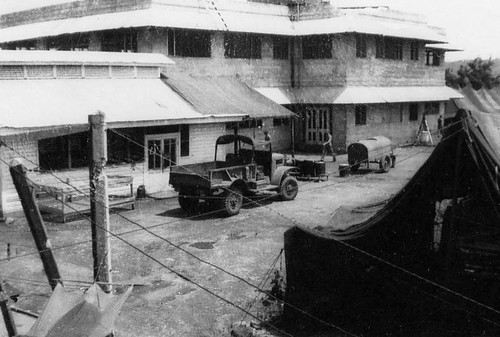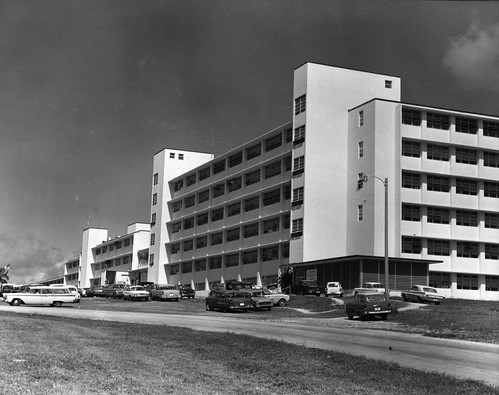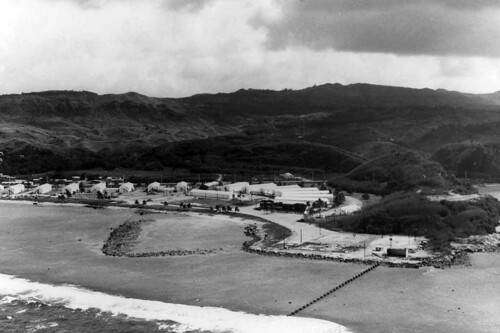Health Services
Establishing health services after WWII
When the US military recaptured Guam from Japanese forces in July to August 1944, temporary field hospitals were established in secured areas of the Hågat and Anigua beachheads. Both civilian and military wards were later moved to a complex of metal buildings in the village of Tamuning. The civilian ward, renamed Guam Memorial Hospital in 1946 in honor of the Chamorro casualties of World War II, came under civilian administration in 1950 and in 1956 moved into a modern reinforced concrete 236-bed structure nearby. Health services were again organized as they had been before the war, the Department of Health being responsible for all health related services.
The US Naval Hospital moved from its temporary buildings to a typhoon proof 350-bed structure in Agana Heights, overlooking the city of Hagåtña in 1954. In addition to caring for active-duty military personnel and their dependents throughout the Western Pacific, it cooperated with civilian authorities of Guam and neighboring islands by providing both routine consultative and emergency services. Effective 1 July 1964 under civilian administration, health service functions were divided between two agencies; the Guam Memorial Hospital and the Department of Public Health and Welfare. The hospital provided medical treatment, certain rehabilitation services and, at a later date, mental health services.
The Division of Public Health of the Department of Public Health and Welfare was responsible for maintaining adequate health standards for the community. This was to be accomplished through immunization programs, sanitation inspections of private and public facilities, special programs to control specific contagious diseases such as tuberculosis and leprosy, and the provision of public clinics for the prevention and early detection of disease.
The Division of Welfare assumed duties which, under the military administration, had been administered by the Guam Chapter of the American Red Cross. Services rendered by the division include old age assistance; medical assistance for the aged; aid to families with dependent children and to the blind or disabled; and general assistance, protective, corrective and counseling activities for young people to curb the problems of juvenile delinquency and school dropouts.
In 1970, the Division of Public Health operated eleven village clinics that provided complete well child and maternal care services as well as cancer detection services, family planning information and home care supervision. Central clinics located in two additional strategically located villages also provided dental health and communicable disease control services as well as chronic disease supervision and some crippled children services.
Further reorganization had occurred by 1971 when the importance of two activities formerly within the Division of Public Health was recognized and each was elevated to divisional status. These became the Division of Dental Health and the Division of Environmental Health Services.
For further reading
Haddock, Robert L. A History of Health on Guam. Hagåtña: Cruz Publications, 1973.



